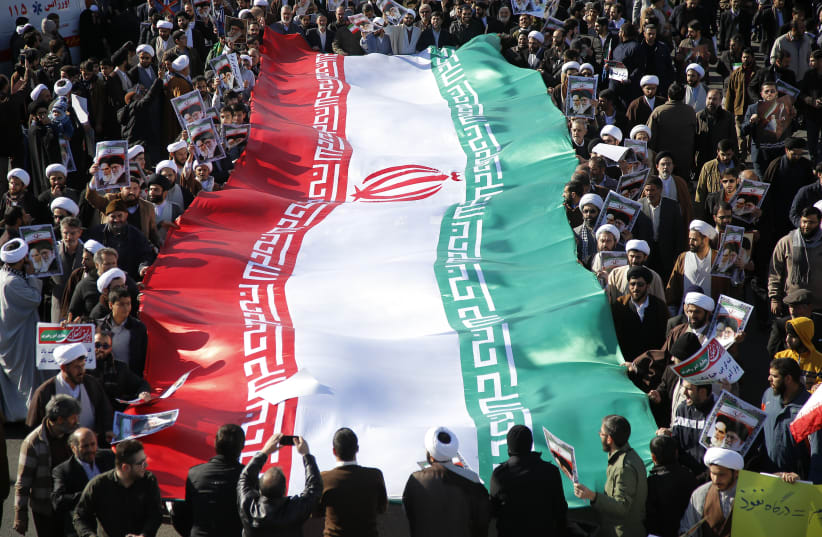She said that while many of the protests are small, they have migrated to as many as 100 cities and that social media has helped the outside world follow developments inside the notoriously closed Islamic Republic.Observers have come to expect the regime to seek to suppress protests with force, which Gindin said the state is doing by flooding the streets “with more security people... than protesters or even citizens... People are feeling they are in an occupied city.”But now, she said, Iran is also using social media to counter the protests.Demonstrators in #Balochistan chase away #Iran’s Islamist paramilitary forces. #IranianProtest #IranProtests pic.twitter.com/OdhiAm2HAp
— PDKI (@PDKIenglish) January 3, 2018
“The drawbacks of social media are you don’t know who’s lying. There is fake news everywhere. I follow both pro- and anti-regime feeds,” she said and then added that both sides were using social media to accuse the other side of killing a 13-year-old boy.If prior to the regime’s use of social media it would suffice with attacking the motivations of the protesters, but would be on the defensive about embarrassing facts – such as its forces killing women or children – now the regime is using social media to contest embarrassing facts.Whereas the protesters accused regime guards of killing the 13-year-old boy, the regime has used social media to accuse the protesters, said Gindin.Furthermore, she said the regime has used social media to highlight violent elements of the protests, including the burning of banks, clergy offices and police stations, and the beating of some clergy members.She added that some protesters are claiming that police officers are breaking into stores in order to blame it on them, with the regime then countering that those in police uniforms who might be seen breaking stores are imposter-protesters trying to tarnish the police.Finally, once the protests hit a certain volume, the Iranian government announced it would start blocking the use of social media to contain the protests.Gindin said she has gotten mixed reactions from Iranians currently in the country regarding the effectiveness of these social media-blocking efforts.Some have told her that the regime is using technology to counter cellular technology that is slowing, restricting or filtering protesters’ use of social media.These people have told her that only those with higher technical abilities can bypass the state’s social media limits.But others have told her that “there is no problem. One said I can talk on my cellphone and do video chats with people abroad.”Gindin summed up the reports about the regime blocking social media as uneven, possibly varying by area and technology, and also possibly exaggerated.#Iran regime propaganda: State TV makes confessio videos of detained protestors. #Iran #تظاهرات_سراسرى pic.twitter.com/3we3RL5jgB
— Farnaz Fassihi (@farnazfassihi) January 3, 2018
